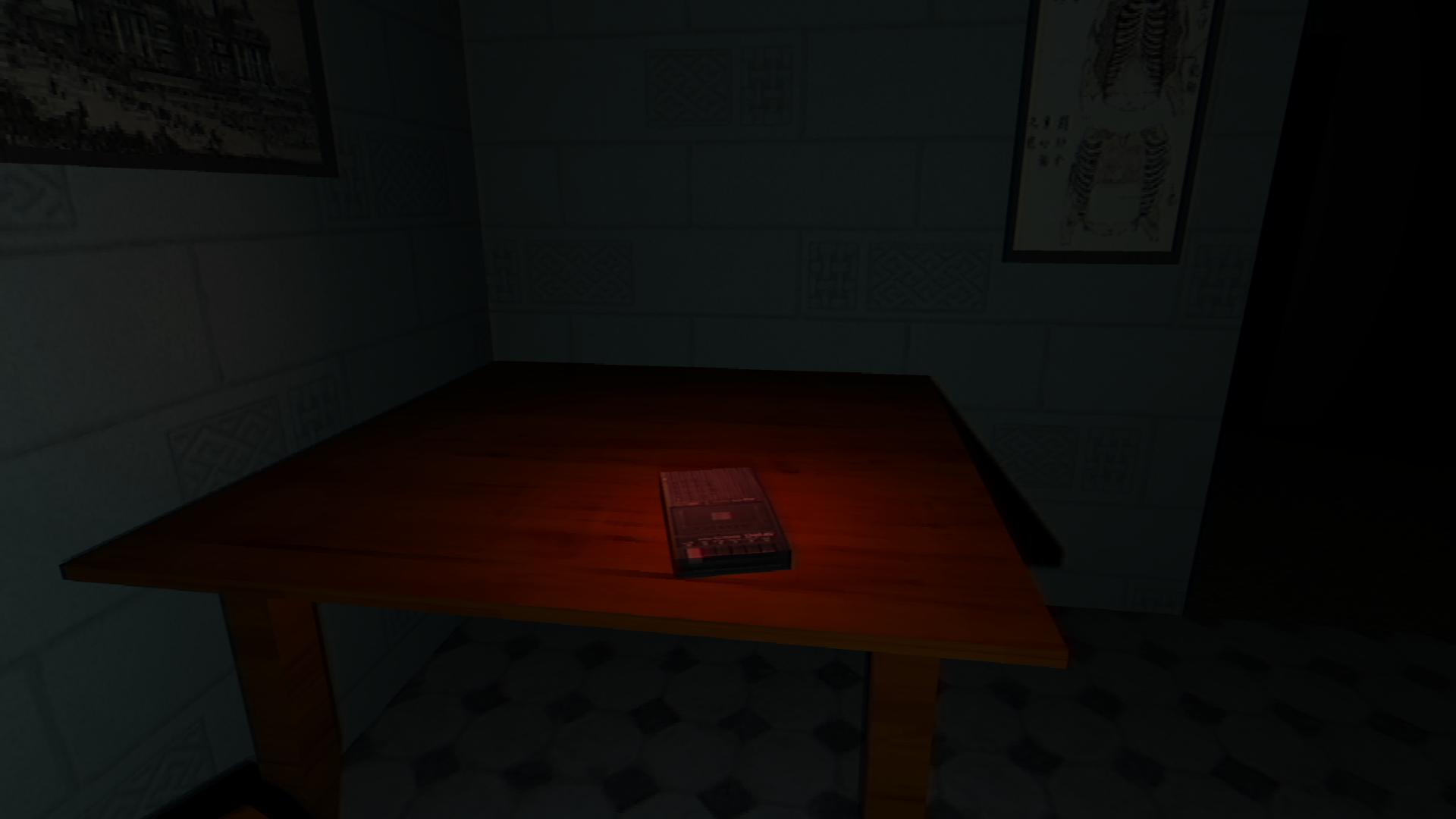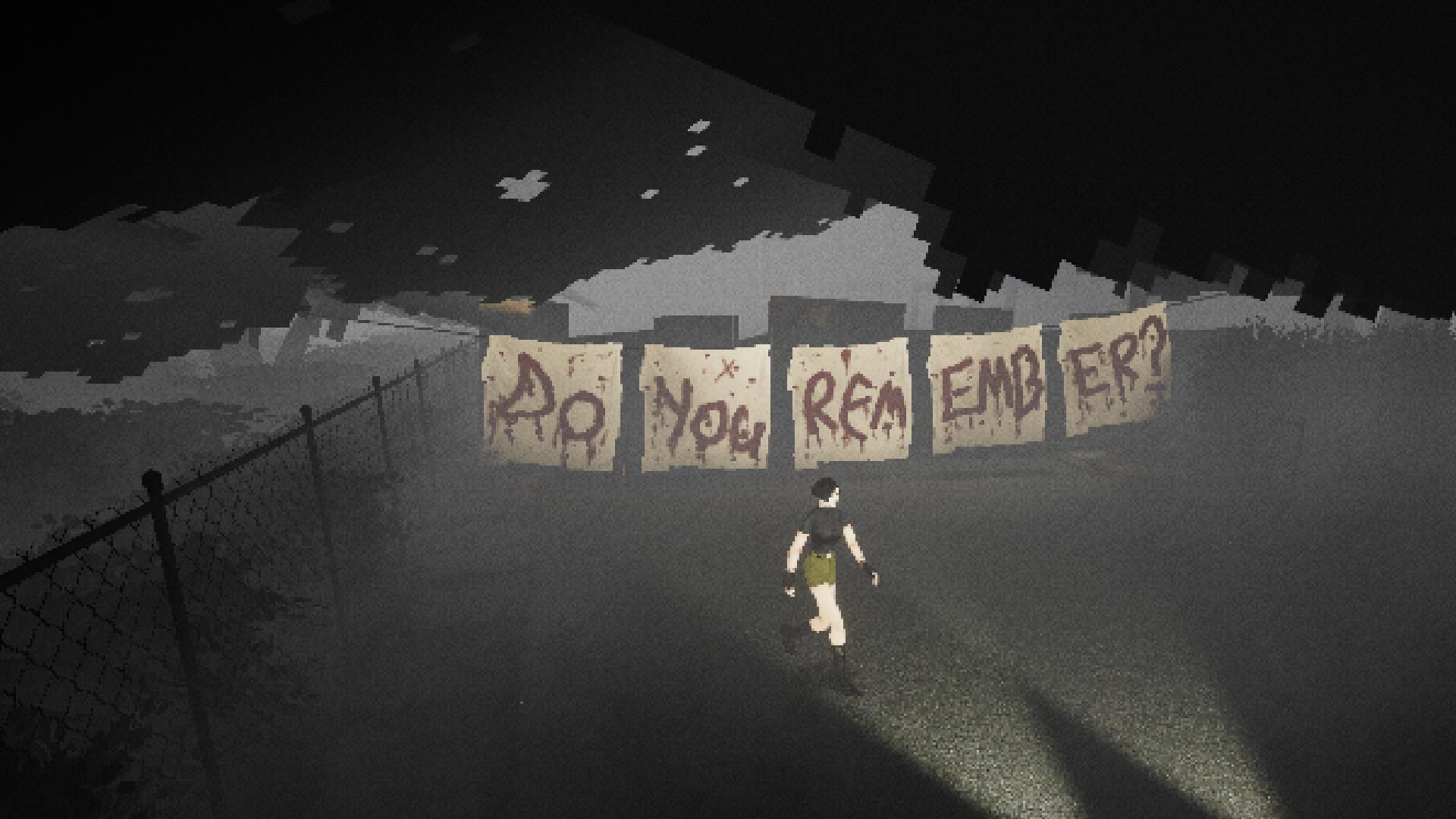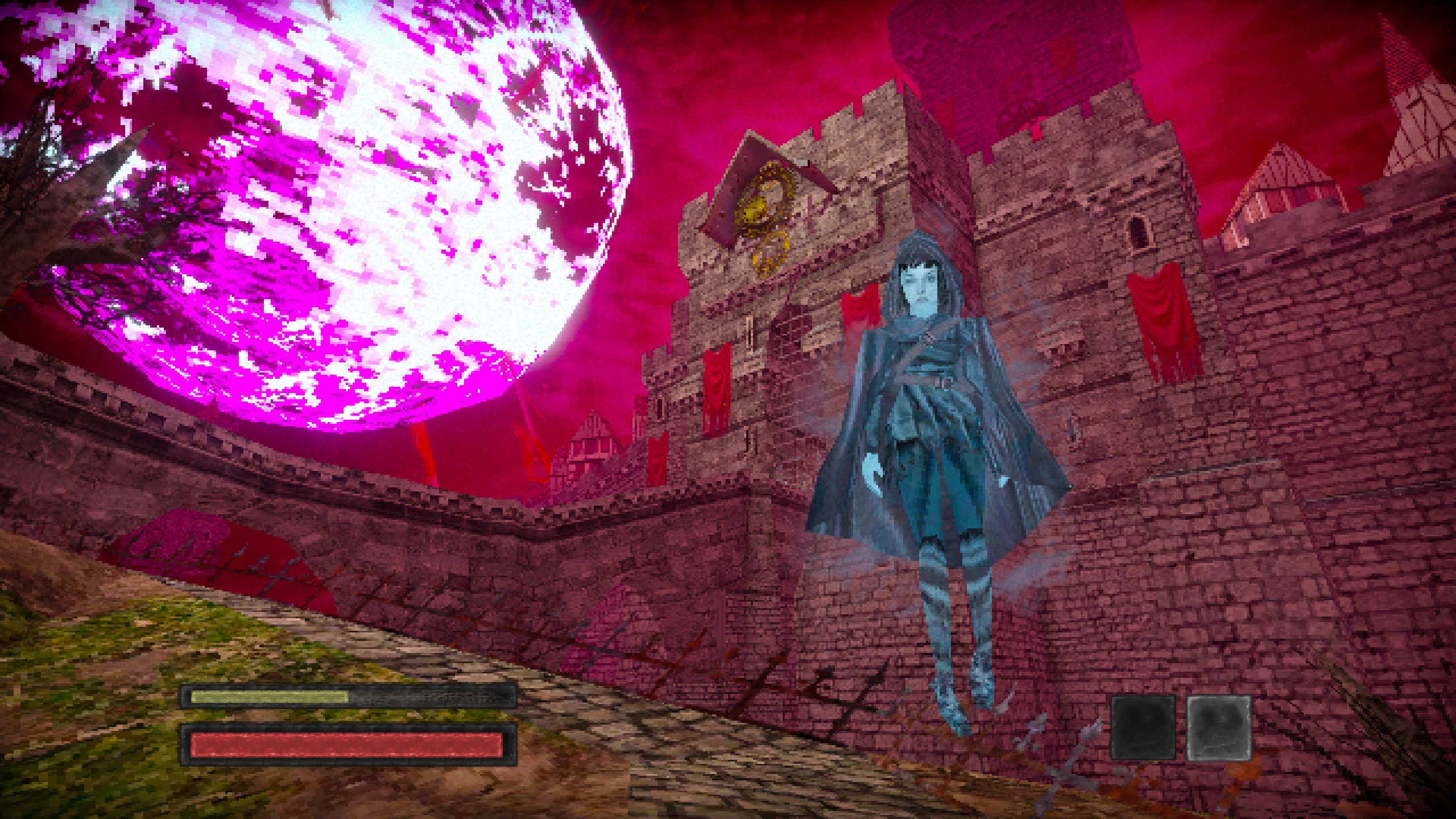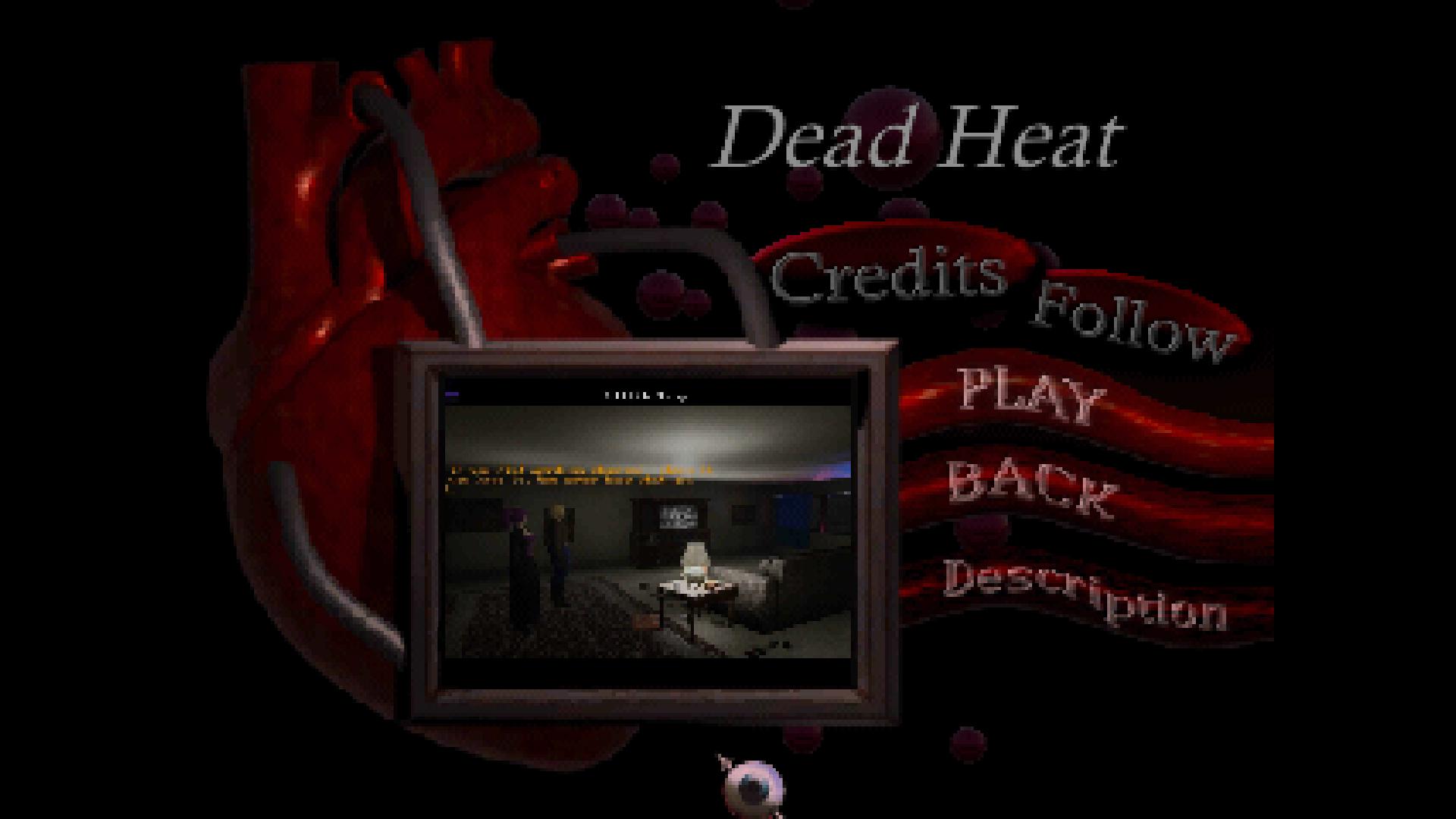Inside the next indie frontier: PS1-style horror games
The low-poly 3D aesthetic of the Haunted PS1 Demo Disc is the new frontier of indie style.

Orange County is a skateboarding game, and although it looks made in 1999, it doesn't play like Tony Hawk. It's set in a darkened suburb where a car might slam into you at any second, resulting in instant death and the word NO flashing across the screen. Meanwhile, Tasty Ramen looks bright and colorful like Jet Set Radio, but is about being hunted by a bowl of noodles as tenacious and unstoppable as the xenomorph in Alien: Isolation.
Both these games are part of the Haunted PS1 Demo Disc, a collection of games that are not on a disc and do not run on a PlayStation. Instead they're demos of forthcoming indie games on PC that all share a blocky, PlayStation 1-esque art style and a weird sense of creeping dread. There's an ad with a talking skeleton that sums it up better than anyone with skin could.
People have been wondering when indie games would move on from pixel art for as long as people who hate pixel art have had access to comments sections. There's a thread on the Resetera forums from 2018 where someone innocently asks, Why don't we have a "low-poly PS1 inspired" games craze as we have pixel-art SNES/MD/NES? It's followed by 12 pages of back and forth as people chime in to say "Because low poly is usually fugly as shit, while pixel art is beautiful" or "Why would you spend your time and money to create games that look bad?"
Early 3D game design had none of the established tropes of the modern era. It was a new frontier.
James Wragg
For Toni Kortelahti and a growing scene of indie developers, though, "ugliness" is the appeal. Kortelahti makes videos under the label 98DEMAKE, imagining what modern games would look like if they'd been released in 1998. One of his most popular videos, with two million views on YouTube, takes Grand Theft Auto 5 and drops the draw distance so it extends only slightly further than arm's reach.
He's done similar things for Resident Evil 7, Rocket League, and even Minecraft, raising the perspective and adding PlayStation button prompts. Some even start with him holding a fake PS1 jewel case. "I've always vouched for authenticity," Kortelahti says. "If you're going to sell your game as 'PS1 styled', it should have the quirks and flaws of the original hardware, instead of just slapping a pixelation filter on top of regular low-poly graphics. People should be able to immerse themselves into the idea of 'this is running on a PS1', while it of course isn't."
Kortelahti went beyond videos to make his own games in this style, including OK/Normal, which is inspired by LSD: Dream Emulator. A 1998 release by Asmik Ace Entertainment in Japan, LSD: Dream Emulator was a psychedelic experiment in exploring surreal spaces, which earned cult status for its sheer weirdness. "I instantly loved the crudeness of it," Kortelahti says, "and the fact that there's no clear goals or objectives. The graphics, even for their time, aren't very good. The framerate is awful. The controls are awkward. Yet, it still manages to capture a feeling that I haven't seen captured since."
At play amidst the strangeness and charm
When we talk about 2D pixel art the word "charm" comes up a lot. There's a naive, child-like wholesomeness that games like Stardew Valley evoke. By contrast, early 3D graphics look rough, uncanny, unwholesome. If they manage to be charming, it's only because they look so primitive. Games like OK/Normal exploit that to make us feel uncertain, to bring out some of the trepidation we felt playing games at an age when we knew far less about what was possible in them.
Keep up to date with the most important stories and the best deals, as picked by the PC Gamer team.
Indie developer Kitty Horrorshow makes first-person games that benefit from that sense of uncertainty. Anatomy, which is all about overdubbed cassette tapes and VHS fuzz, makes players reset the game and degrades itself a little more each time. But even without filters and effects, it's an aesthetic with plenty of room for our imaginations to turn paranoid.

Survival horror was big in the late 1990s. Alone in the Dark, Resident Evil, and Silent Hill were all designed with 3D spaces that had a sense of reality to them, but were overlaid with wobbling, low-res textures and peopled by characters restricted to jerky movements and rough, freakish faces. Horror was a perfect fit.
High-res modern game dev is too open-ended—the detail that we can put into games nowadays seems never-ending
Vincent Adinolfi
While games like Tunic and Donut County find cuteness in low-poly 3D graphics, many more now lean into the uncanny. Games like Night of the Consumers, Crypt Worlds and Lost in Vivo, for example, as well as the parallel scene of retro first-person shooters like Amid Evil and Dusk. They take that creepiness and use it to hark back to a time when the FPS genre was also new enough to feel odd and threatening.
You want to play some cool videogames?
Early in 2020, a collection of upcoming work from the growing low-poly 3D scene called the Haunted PS1 Demo Disc bundled together 15 games that are all tapping this rich vein of blurry horror. One of them, Heartworm, looks like the first Silent Hill but with a protagonist closer to 1990s Lara Croft. She receives a mysterious videotape one day—a fascination with VHS and other dated media persists throughout these games—and when she watches it is transported to a ghost town full of secret doors and blurred textures.
It's the work of Vincent Adinolfi, who says his goal was to recreate the original survival horror formula in a modern engine. "I needed to strike a balance between ambient storytelling, puzzle solving, realistic/underpowered combat, and item management," he says. "I wanted to stick to the fundamentals of the genre and not head into action-horror territory like RE4 or Dead Space. Unfortunately, only the first two made it into the demo—combat and item management weren’t quite ready, but they'll all make their way into the final game."

Silent Hill is an interesting inspiration because part of what made it great was how it worked within the limitations of the PlayStation. Knowing that they'd have an abbreviated draw distance to work with, Team Silent drenched the town in evocative fog and hinted at enemies who couldn't be seen with wingbeats, footsteps, and radio buzz.
I think something has been lost with AAA hyperrealism
James Wragg
"High-res modern game dev is too open-ended—the detail that we can put into games nowadays seems never-ending," says Adinolfi. "It's intimidating, but I generally like things to be more abstract and less explicit, so I think this style is a great framework for the story I’m telling.
"Someone commented on a video of the demo disc and said 'The gaps in detail create space for our brains to speculate wildly, fearfully. Abstraction works because we aren’t given the answers.' And I don’t think I could have possibly said it better myself."
The future of retro

Dread Delusion is another of the Haunted PS1 demos, set in a corrupted medieval world under a red sky. While spooky, it's a fantasy RPG first. Designer James Wragg insists that there's potential in low-poly 3D games to explore more genres. "Well, the retro horror scene is certainly booming right now," he says. "But I think the benefits of low-poly abstraction extend beyond horror."
He brings up the PS1-era Final Fantasy games, with their 3D battles separated by more abstract world exploration, as another example of making the most of limitations. "Eventually you're flying around a low-poly globe in an airship, letting your imagination run wild. Just as most readers will always prefer their interpretation of a novel to the film adaptation, I think something has been lost with AAA hyperrealism. It leaves no room for the player's own creativity, and restricts the stories they tell."
Though Wragg keeps an old television hooked up to an OG PlayStation for when he needs some inspiration, he says his fondness for the aesthetic goes deeper than nostalgia. "There's definitely a magical sensation when I boot up a PS1," he says, "that startup intro stimulates a cluster of neurons from childhood, rekindling a simpler time. But there's more to it than that. Early 3D game design had none of the established tropes of the modern era. It was a new frontier, in which developers had to experiment. There's some wonderful ideas which have been lost to time, and I want to recapture some of that creative freedom."

The games on the Haunted PS1 Demo Disc are, of course, just demos, but it'll be fascinating to see where they go from these beginnings. Especially the likes of Dead Heat, set in a New York where zombies live and work alongside ordinary people, and two detectives (one of them undead) have to work together to solve a murder. Or Sauna 2000, in which you have to get a Finnish sauna going before the sun goes down while being harrassed by something inexplicable in the corner of your vision.
We're bound to see plenty more indie games exploring the low-poly 3D aesthetic as more developers realize what's possible. Kortelahti has several more projects on the go too. In the last couple of years his videos have gone even further back in time, demaking games back to the GameBoy period with the likes of If Fallout: New Vegas was made in 1992. He's also got more of his own "weird PS1-esque games" in the works, he says.
"In addition to a PS2-inspired one—getting a head start on that style."

Jody's first computer was a Commodore 64, so he remembers having to use a code wheel to play Pool of Radiance. A former music journalist who interviewed everyone from Giorgio Moroder to Trent Reznor, Jody also co-hosted Australia's first radio show about videogames, Zed Games. He's written for Rock Paper Shotgun, The Big Issue, GamesRadar, Zam, Glixel, Five Out of Ten Magazine, and Playboy.com, whose cheques with the bunny logo made for fun conversations at the bank. Jody's first article for PC Gamer was about the audio of Alien Isolation, published in 2015, and since then he's written about why Silent Hill belongs on PC, why Recettear: An Item Shop's Tale is the best fantasy shopkeeper tycoon game, and how weird Lost Ark can get. Jody edited PC Gamer Indie from 2017 to 2018, and he eventually lived up to his promise to play every Warhammer videogame.

